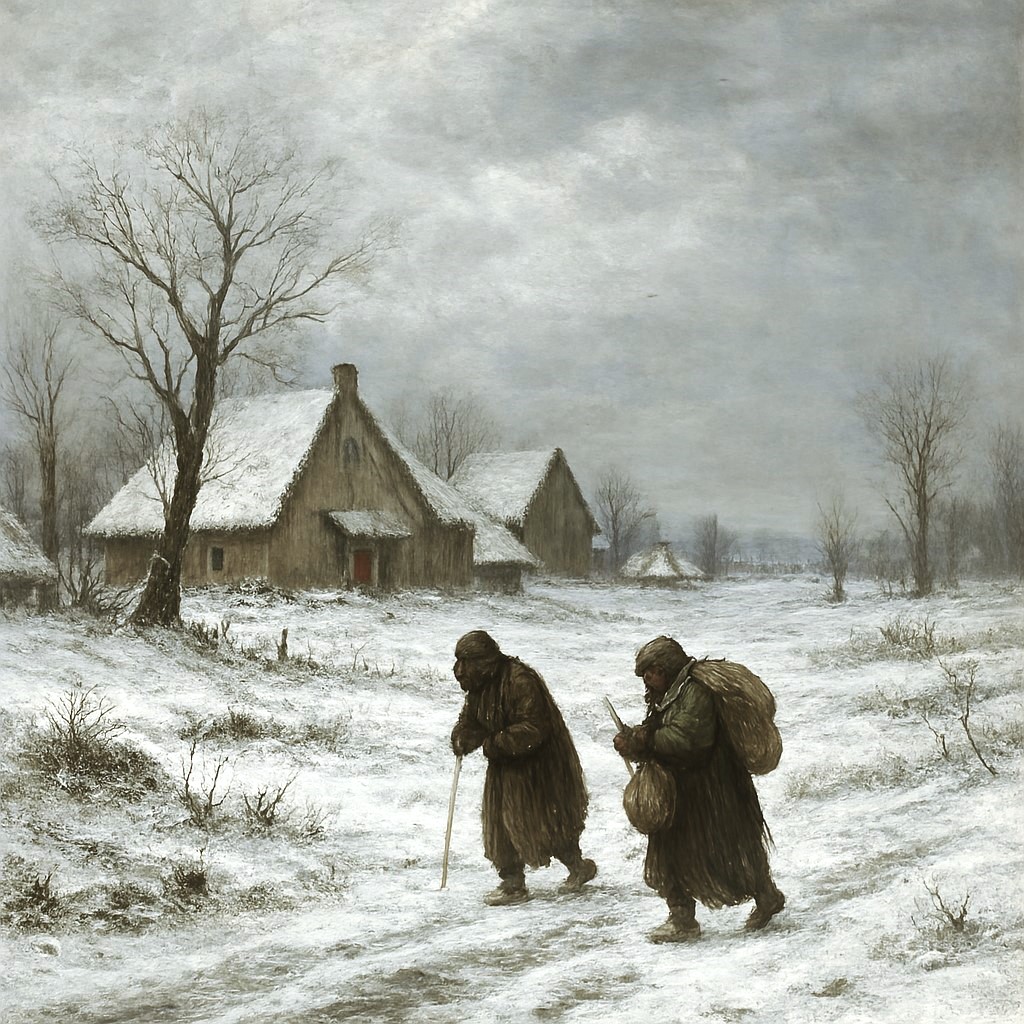Icy Conditions
Icy conditions describe a temperature range between 10 to 19°F. At this level of cold, discomfort becomes persistent and inescapable. The air bites against exposed skin, causing reddening and mild numbing after a few minutes, but not immediate injury. The breath becomes clearly visible in constant clouds and the lungs may feel a dry sting when drawing air too quickly. Even without wind, the chill begins to seep into the body with slow insistence, settling into hands, feet and the face if left uncovered.
Contents
Clothing worn in this temperature is heavy, layered and often inflexible. Movement slows as garments rub and bunch; even walking requires more effort as boots stiffen and grip uneven terrain. Tasks requiring dexterity, such as lighting a fire or untying a knot, become awkward and time-consuming. Gloves protect against the cold but limit precision, and even leather begins to lose pliability, requiring warming before use. Metal tools can still be handled safely for short periods, but without gloves, they cause stinging pain within seconds.
Snow remains firmly packed underfoot and crunches loudly with each step. Ice forms in shaded areas and along travelled paths, and may be invisible beneath a thin layer of snow. Crossing open ground demands care, not only for footing but to avoid missteps where snow has drifted into uneven hollows. Streams and shallow water sources may have a crust of ice, though not yet thick enough to reliably bear weight. Most small ponds begin to freeze and frost accumulates along walls, branches and the outer edges of windows and doors.
Travel is still possible without magical aid, but it demands steady maintenance of body heat and preparation. Pauses must be brief, or else the cold settles into the limbs. Breath dampens scarves and collars, leaving cloth stiff with ice. Inside cloaks and hoods, moisture builds with every exhalation. The cold is not dangerous minute-to-minute, but it becomes a slow tax on the body, making sustained activity more tiring and requiring more frequent rest.
Daily Life
Livfe continues under these conditions, but at reduced pace. Fires are kept burning through much of the day. Water must be drawn before sunrise and stored in covered vessels, as it begins to freeze indoors without close proximity to heat. Livestock need constant tending to ensure they do not chill, but may still be led out for brief grazing if sunlight permits. Smoke lingers in still air, and most activity — gathering, mending, preparing food — occurs close to the hearth. Windows are shuttered and outer doors are opened only when necessary.
Villages and hamlets remain active, though social customs adapt. Market activity is brief and restrained. Religious observances are often shortened or moved indoors. Travel between settlements occurs in groups and is planned for the warmest part of the day. For those unaccustomed to it, icy weather at this range is exhausting; for locals, it is endured with resignation and practical rhythm.
Adventuring
Within wilderness settings, some creatures remain active — particularly those adapted to northern climates — but many have already withdrawn into dens or thickets for warmth. Animal trails remain visible for hours or days in the snow, and sounds carry farther in the thin air. Adventurers moving through the wild must contend not with constant peril, but with creeping discomfort: damp socks, stiff joints and the slow frustration of equipment that no longer moves or fits as it should.
Dungeon spaces, if exposed to the surface, may experience patches of ice or frost along entrances and upper levels. Water seeps begin to freeze, but full ice formations are not yet established unless the space has been left open to wind or shadow for extended time. Cold steel tools become slow to handle, but still serviceable. Torches and lanterns remain viable sources of heat and light, though oil thickens and may require coaxing to ignite.
At this range, icy conditions are not extreme — but they shape every choice. Time, effort and warmth must be managed with care. The risk of harm is low, but the cost of neglect is high.
See also,
Frosty Conditions
Temperature Grades
Wintry Conditions
